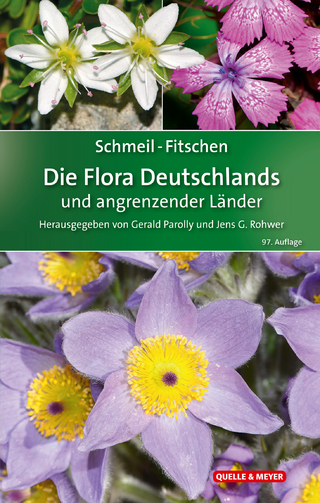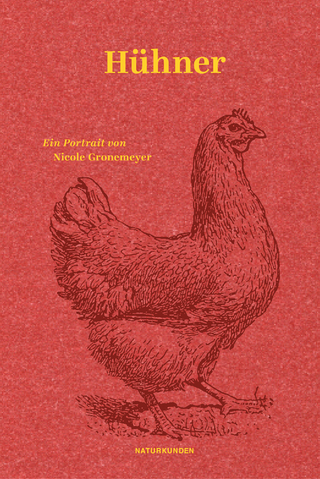
Birds of the Horn of Africa
Princeton University Press (Verlag)
978-0-691-17289-7 (ISBN)
Birds of the Horn of Africa is widely regarded as the best field guide to the more than 1,000 species of resident, migrant, and vagrant birds found in northeast Africa--and it just got even better. Now fully revised and expanded, this comprehensive, easy-to-use guide has been updated with the latest information on distribution, identification, and taxonomy. New vagrants to the region have been added; color plates, illustrations, and distribution maps have been thoroughly updated and improved; and much more--making this still the must-have guide for birders, naturalists, and travelers in the region.
* Covers Ethiopia, Eritrea, Djibouti, Somalia, and the Socotra archipelago* Features more than 2,600 illustrations on 213 stunning color plates* Provides a color distribution map for every species* Detailed species accounts on facing pages describe key identification features, similar species, geographical variation, habitat, status, and voice* Includes a glossary, identification tips, and information about habitats* Key identification features are shown more prominently in the text* Now includes an annotated distributional checklist by country and a comparison table for large white-headed gulls
Nigel Redman is a publisher and bird tour leader who has visited Africa many times. Terry Stevenson and John Fanshawe are the authors of Birds of East Africa (Princeton) and have many years of experience leading bird tours and conducting conservation work in Africa.
Introduction 9 Acknowledgements 10 How to use this book 11 The plates 11 Species accounts 11 Abbreviations 15 Maps 16 Taxonomy and nomenclature 17 Bird Identification 18 Learning to identify birds 18 Individual variation 19 Moult 20 Bird topography 21 Glossary 23 Geography, climate and habitats 26 Important Bird Areas 30 Organisations and websites 32 Species accounts 33 Ostriches STRUTHIONIDAE34 Albatrosses DIOMEDEIDAE 36 Petrels and shearwaters PROCELLARIIDAE 36-38 Storm-petrels HYDROBATIDAE 40 Tropicbirds PHAETHONTIDAE42 Frigatebirds FREGATIDAE 42 Boobies SULIDAE 44 Pelicans PELECANIDAE 46 Grebes PODICIPEDIDAE 46 Cormorants PHALACROCORACIDAE 48 Darters ANHINGIDAE 48 Finfoot HELIORNITHIDAE 48 Bitterns, herons and egrets ARDEIDAE 50-56 Hamerkop SCOPIDAE 58 Storks CICONIIDAE 58-62 Shoebill BALAENICIPITIDAE 62 Ibises and spoonbills THRESKIORNITHIDAE 64-66 Flamingos PHOENICOPTERIDAE66 Ducks and geese ANATIDAE 68-78 Secretarybird SAGITTARIIDAE 80 Hawks, buzzards and eagles ACCIPITRIDAE 80-112 Falcons FALCONIDAE 114-122 Guineafowl NUMIDIDAE 124 Quails and francolins PHASIANIDAE 124-130 Buttonquails TURNICIDAE 130 Rails, crakes and gallinules RALLIDAE 132-138 Cranes GRUIDAE 140 Bustards OTIDIDAE 142-144 Jacanas JACANIDAE 146 Painted-snipe ROSTRATULIDAE 146 Crab-plover DROMADIDAE 148 Oystercatchers HAEMATOPODIDAE 148 Stilts and avocets RECURVIROSTRIDAE 148 Thick-knees BURHINIDAE 150 Coursers and pratincoles GLAREOLIDAE 152-154 Plovers CHARADRIIDAE 156-164 Sandpipers and allies SCOLOPACIDAE 164-176 Skuas STERCORARIIDAE 178 Gulls LARIDAE 180-184 Terns STERNIDAE 186-192 Skimmers RYNCHOPIDAE 190 Sandgrouse PTEROCLIDAE 194 Pigeons and doves COLUMBIDAE 196-204 Parrots and lovebirds PSITTACIDAE 206 Turacos MUSOPHAGIDAE 208 Cuckoos and coucals CUCULIDAE 210-216 Barn owls TYTONIDAE 218 Typical Owls STRIGIDAE 218-222 Nightjars CAPRIMULGIDAE 224-228 Swifts APODIDAE230-234 Mousebirds COLIIDAE 236 Trogons TROGONIDAE 236 Kingfishers ALCEDINIDAE 238-242 Bee-eaters MEROPIDAE 244-248 Rollers CORACIIDAE 248-250 Wood-hoopoes and scimitarbills PHOENICULIDAE 252-254 Hoopoes UPUPIDAE 254 Hornbills BUCEROTIDAE 256-258 Ground-hornbills BUCORVIDAE 258 Barbets and tinkerbirds CAPITONIDAE 260-264 Honeyguides INDICATORIDAE 266 Woodpeckers and wrynecks PICIDAE 268-270 Larks ALAUDIDAE 272-282 Swallows and martins HIRUNDINIDAE 284-288 Wagtails, pipits and longclaws MOTACILLIDAE 290-296 Cuckooshrikes CAMPEPHAGIDAE 298 Hypocolius HYPOCOLIIDAE 298 Pittas PITTIDAE 300 Bulbuls PYCNONOTIDAE 300-302 Thrushes and chats TURDIDAE 304-322 Warblers SYLVIIDAE 324-342 Cisticolas and allies CISTICOLIDAE 344-352 Flycatchers MUSCICAPIDAE 354-358 Monarch flycatchers MONARCHIDAE358 Wattle-eyes and batises PLATYSTEIRIDAE 360 Babblers TIMALIIDAE 362-364 Tits PARIDAE 366 Treecreepers CERTHIIDAE 366 Penduline-tits REMIZIDAE 368 White-eyes ZOSTEROPIDAE 368 Sunbirds NECTARINIIDAE 370-378 Shrikes LANIIDAE 380-384 Bush-shrikes MALACONOTIDAE 384-390 Nicators INCERTAE SEDIS 390 Helmetshrikes PRIONOPIDAE 392 Orioles ORIOLIDAE 394 Drongos DICRURIDAE 396 Crows CORVIDAE 396-400 Starlings and oxpeckers STURNIDAE 402-410 Sparrows and petronias PASSERIDAE 412-416 Weavers PLOCEIDAE 416-432 Waxbills ESTRILDIDAE 434-444 Whydahs and indigobirds VIDUIDAE 446-448 Canaries and seedeaters FRINGILLIDAE 450-456 Buntings EMBERIZIDAE 456-458 Checklist of the birds of the Horn of Africa 460 Appendix 1: Species endemic to the Horn of Africa 488 Appendix 2: Hypothetical species 491 Appendix 3: LARGE WHITE-HEADED GULL S 492 References and further reading 493 Index 495 Quick index to the main groups of birds 512
| Erscheinungsdatum | 02.09.2016 |
|---|---|
| Reihe/Serie | Princeton Field Guides |
| Zusatzinfo | 1 Maps |
| Verlagsort | New Jersey |
| Sprache | englisch |
| Maße | 140 x 216 mm |
| Gewicht | 907 g |
| Themenwelt | Sachbuch/Ratgeber ► Natur / Technik ► Naturführer |
| Naturwissenschaften ► Biologie ► Zoologie | |
| ISBN-10 | 0-691-17289-7 / 0691172897 |
| ISBN-13 | 978-0-691-17289-7 / 9780691172897 |
| Zustand | Neuware |
| Haben Sie eine Frage zum Produkt? |
aus dem Bereich


